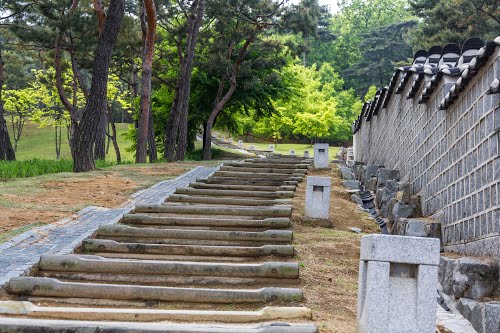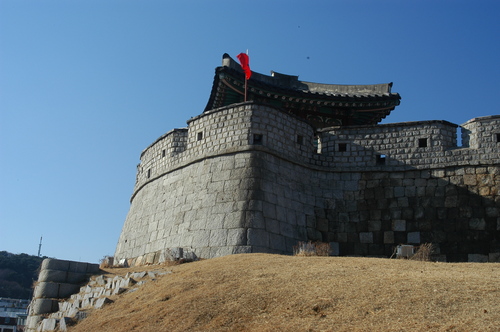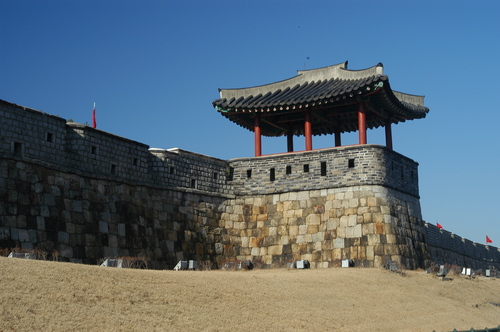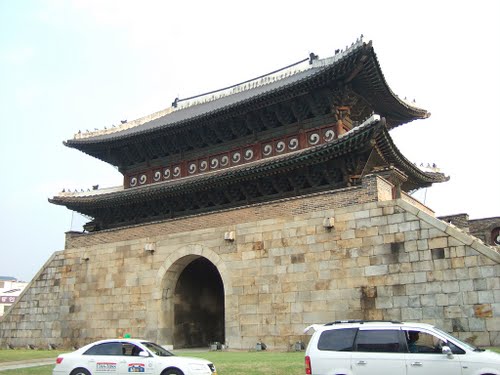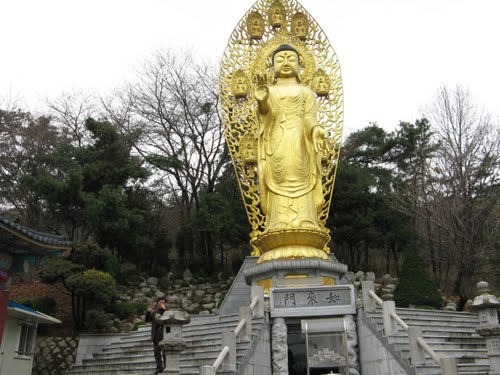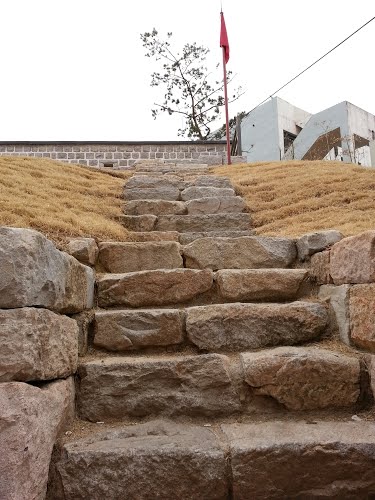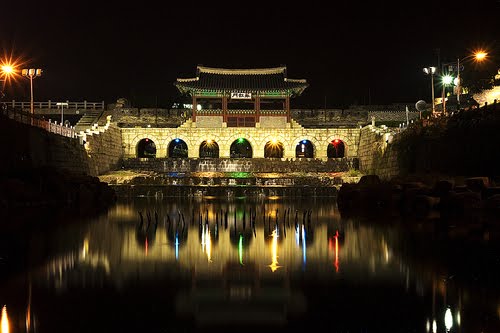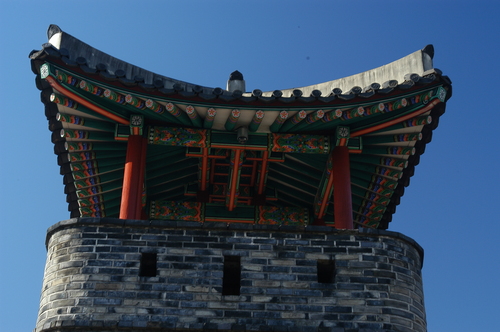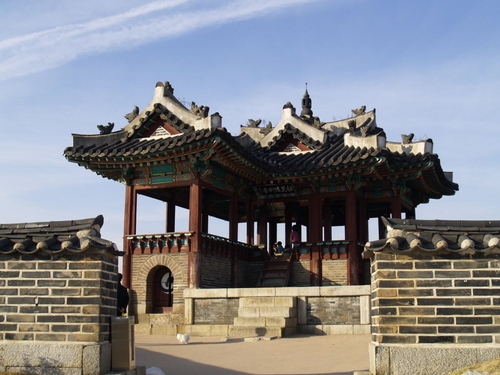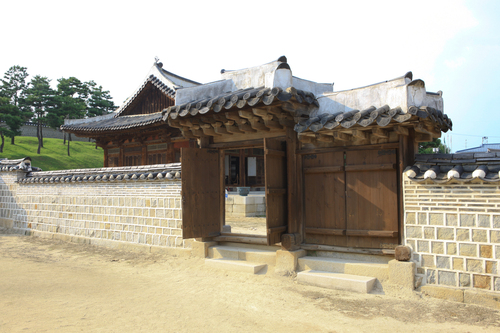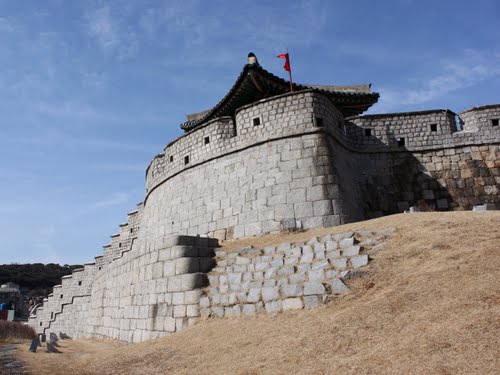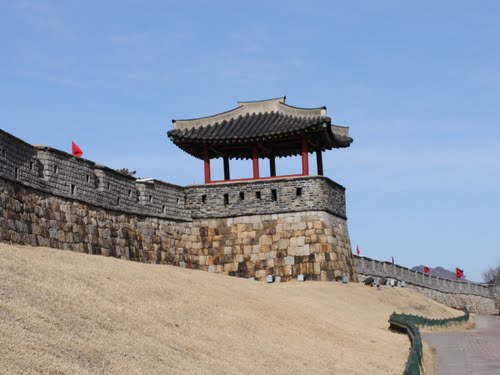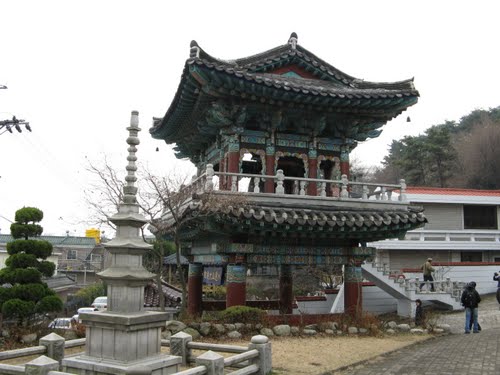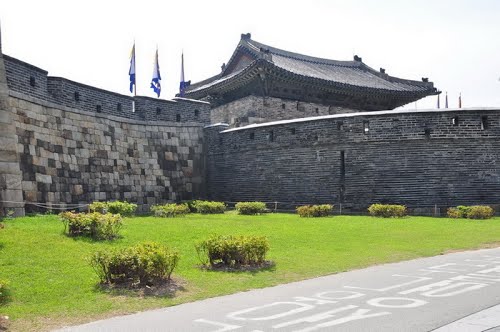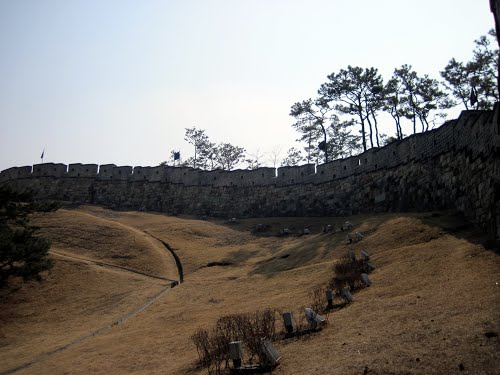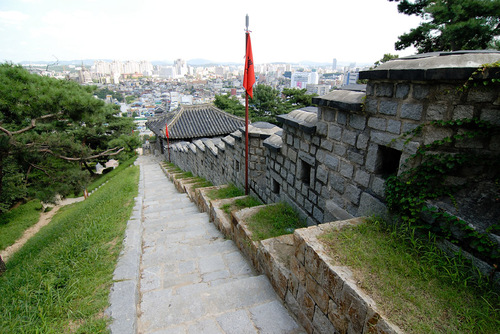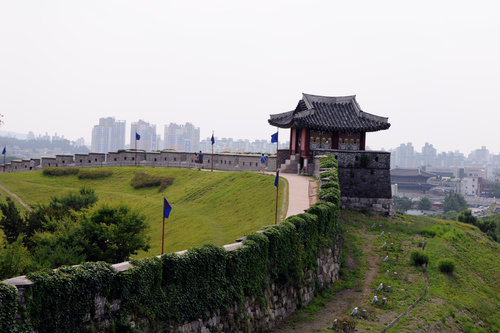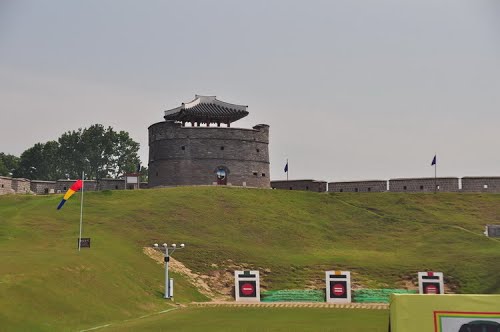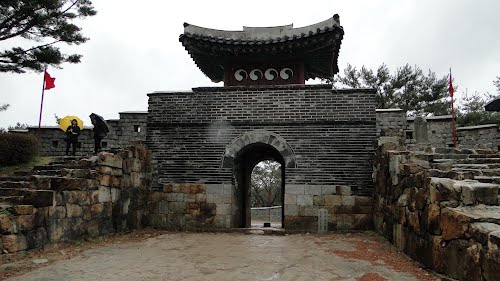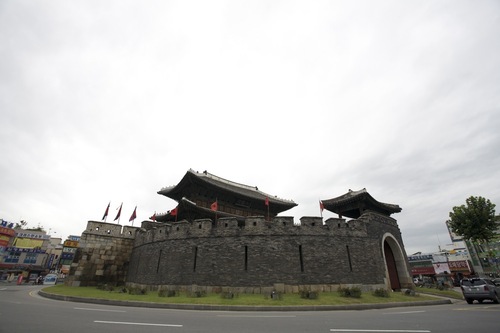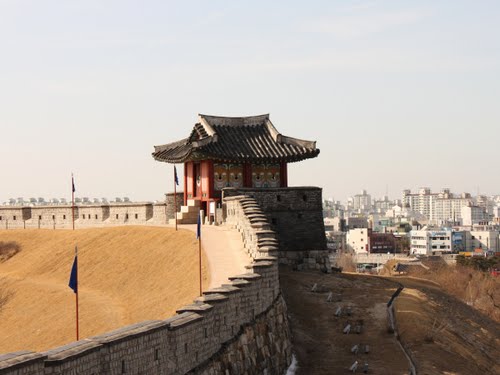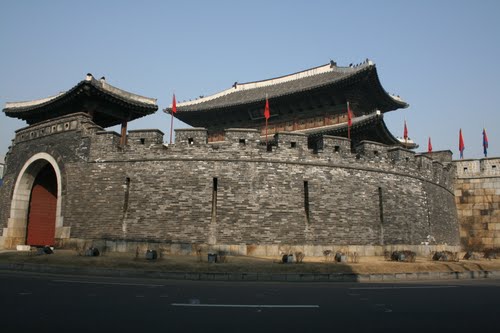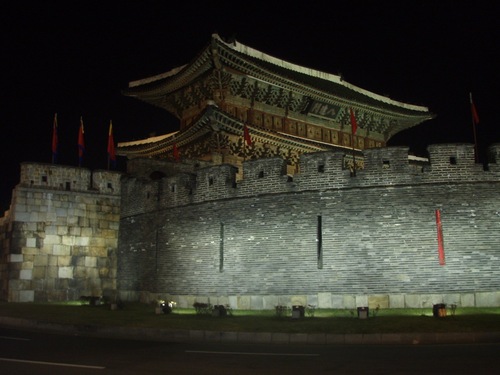Hwaseong is the wall surrounding the centre of Suwon, the provincial capital of Gyeonggi-do, South Korea. This fortress was built from 1794 to 1796 by King Jeongjo of the Joseon Dynasty to house and honour the remains of his father Prince Sado, who had been executed by being locked alive inside a rice chest by his own father King Yeongjo after failing to obey the command to commit suicide. Located 30 kilometres south of Seoul and enclosing much of central Suwon, the Fortress includes King Jeongjo's palace Haenggung. The site was designated as a World Heritage site by the UNESCO in 1997. The Suwoncheon, the main stream in Suwon, flows through the centre of the fortress.
Construction
Hwaseong Fortress was built over two and a half years, from 1794 to 1796, according to the designs of the architect Jeong Yak-yong, who would later become a renowned leader of the Silhak movement. Silhak, which means practical learning, encouraged the use of science and industry, and Jeong incorporated fortress designs from Korea and China along with contemporary science into his plans. Use of brick as a building material for the fortress and employment of efficient pulleys and cranes were also due to the influence of Silhak.
Construction of the fortress was also a response to the collapse of the Korean front line during Imjin war. At the time, the dominant model for building fortresses in Korea was to make a simple wall for the city or town and a separate mountain fortress to which the people could evacuate in times of war. However, this fortress was built to include elements of a wall, defensive fortress, and town centre, the four main gates being used as the gates for the town. The arrow-launching platforms built along ramparts with crenellated parapets and battlements were defensive elements of the fortress while the wall also held secret gates for offensive actions.
King Jeongjo apparently built this fortress to prepare for a move of the capital from Seoul to Suwon. Suwon was purported to be strategically positioned to connect Seoul with the West Sea and China. The king wanted to leave the fracticious strife of the court to carry out reforms and believed that Suwon had the potential to grow into a new and prosperous capital. To encourage growth, he ordered people to move to Suwon at considerable expense and exempted them from taxes for ten years. King Jeongjo also ordered public works, such as the building of educational facilities to better facilitate the city as a capital.

